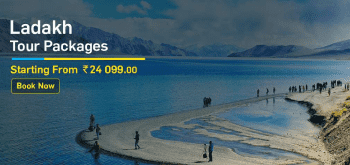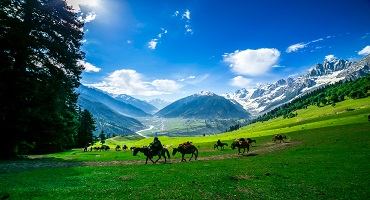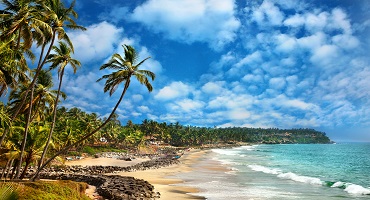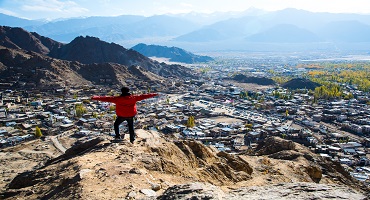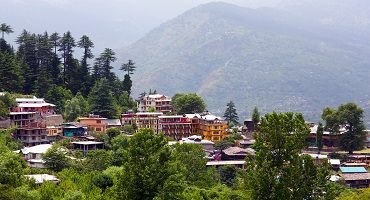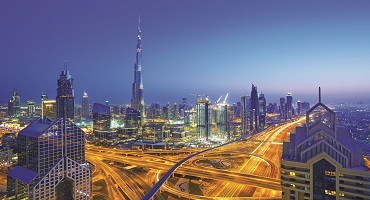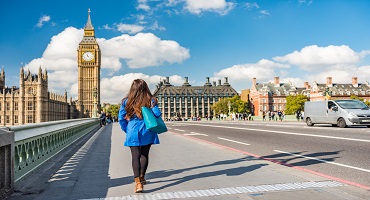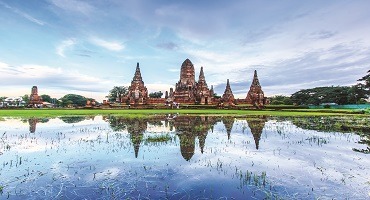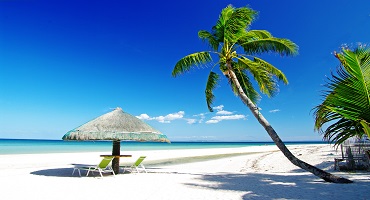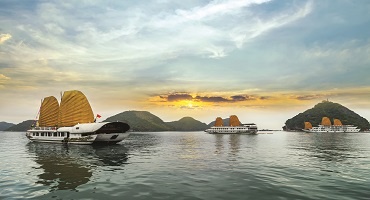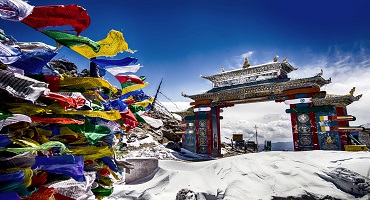Bhubaneswar – Sacred Ground
Have you visited the city of temples? Everywhere you turn, you’ll find one. Put your foot down on sacred earth. The past is close. So close that it feels like the present. Carvings, stone pillars, ancient coins, heritage monuments and more. Now turn again, and suddenly you are in a bustling city – full of the modern conveniences like malls, modern buildings, zoos, wide roads crammed with cars. Yes, this is the magic of Bhubaneswar tourism, where every turn can either send you forward to the future city of India, or back to view its proud past.
| Bhubaneswar Tourism: A Quick View of the City |
| State |
Odisha |
| Official Language |
Odia, English, Hindi |
| Dial Code |
0674 |
| Population |
9.2 lakhs (2018) |
| Currency |
Indian Rupee (INR) |
| Time Zone |
GMT +5:30 (IST) |
| Area |
422 square kilometres |
Highlights Of Bhubaneswar:
Places of Worship
Any journey to Bhubaneswar would be incomplete without a visit to the rich array of temples that the city offers. These are some of the most beautiful places to visit in Bhubaneswar. Start with the rugged stone Lingaraja temple. Dedicated to the Hindu god – Harihara, this is a beautiful example of Kalinga architecture. Witness how carvings, tiers and the towering tops of temples can transform stern stone into stunning places of healing. In contrast to the sombre grey glory of Lingaraja is the bright, beaming Ram Mandir located in the heart of the city. Shades of orange, red and gold festoon the arches, tiers and walls of this temple, and many festivals like Ram Navami, Janmashtami and Dussehra are held here. Next on your list is the creamy brown beauty of the Mukteshvara temple. Wander around the outer walls, which feature lovely carvings of Hindu gods and goddesses. For a unique experience, make your way to the Rajarani Temple, known as the “love temple”. Intricate, sensuous carvings of couples and of men and women can be found decorating the walls of the temple - a beautiful display of artistry and eroticism. And the spiritual tour doesn’t end there – devotees can explore magnificent temples like Ananta Vasudeva temple, Brahma Temple, Chintamanisvara Shiva Temple, Parsurameshvara Temple and more.
Nature and Parks
Temples and trees live in perfect harmony in this city. Bhubaneswar is known for its religious heritage, but it also contains a blooming bouquet of diverse wildlife and vegetation. The Nandankanan Botanical Garden features a medicinal plant garden, rose and bougainvillea gardens and a glass house for succulents. The park also features a diverse range of wildlife. Take a Lion Safari, visit the Reptile Park, or a White Tiger Safari, here. You’ll find a wide variety of cactus plants at Ekamra Kanan, located a few kilometres from the Baramunda bus stand in the city. At Jaydev Vatika park, feast your eyes on 168 different species of plants. You can also visit the Raj Bhawan Garden, KIIT Rose Garden and the Biju Pattnaik Park. If you’re looking to walk on the wild side of Bhubaneswar, visit the Chandaka Dampara Wildlife Sanctuary – a reserve dedicated to wild elephants. One of Bhubaneswar’s famous places to visit near the city are the stunning Udaygiri and Khandagiri twin hills, each of which boasts of ancient caves. You’ll find Jain and Buddhist influences in these caves – with carvings, structures and inscriptions inside.
City Spots
Tourism in Bhubaneswar has lots of offer the hungry traveller. If you’d like to shop in Bhubaneswar, head to the Utkalika or Ekamra Haat – where you can shop for handicraft and handloom products. Browse through and buy from a range of textiles, tribal jewellery, palm leaf paintings and more. Dive deep into Bhubaneswar’s history by visiting the Odisha State Museum, with its palm leaf manuscripts, scroll paintings, Bronze Age tools and Jain and Buddhist sculptures. Wonder at the universe with a visit to Pathani Samanta Planetarium. Gain a deeper understanding of Odia’s tribal culture and communities with a visit to the Tribal Musuem. Find peace and serenity at Dhauli Giri, which houses a stunning Buddhist stupa.
Cuisine
Before you sit down for a meal at Bhubaneswar, may we advise that you loosen the belt, because its going to get uncomfortable very soon. Most of the delicious dishes that Bhubaneswar offer, have rice as the base. Add that to curries made with lamb, chicken, crab and fish and you’ve got a winning combination! Savour dishes like Maccha Ghanta, made with fish chunks, Bengal gram onion, eggplant, potato and spices. Dig into the tender crab meat found in Crab Kalia, made with potatoes, onions, ginger and spices. Hear the crispy snap of Bhendi Bajia – ladyfinger stuffed with spices, ginger garlic and then lightly fried. Relish the magic of prawn in a creamy coconut milk base, when you order Chungdi Malai. Finish the meal with Malpua – desi pancakes made with wheat flour batter, deep fried and served hot.
Interesting Facts about Bhubaneswar:
- Bhubaneswar was designed by the world-famous German architect Otto Konigsberg.
- After fighting the Kalinga War Ashoka was devastated by the deaths of thousands. It was, here, in Bhubaneswar that he first entertained thoughts of becoming a monk. This land is said to have changed the king forever.
- Bhubaneswar derives its name from “Tribhuvaneshwar” which translates to “Lord of the World.
- Along with Puri and Konark, Bhubaneswar forms the Swarna Tribhuja – “Golden Triangle”.
Location Of Bhubaneswar:
Like ribbons that wind their way around a present, Bhubaneswar is wrapped within the silky ribbons of different rivers. The city, which lies on the eastern plains in the Khorda district of Odisha, is bound to the Daya river in the South. Forming its northern boundary of the metropolitan area is the Mahanadi River, while in the east you can hear the rush of the Kuakhai River.
Click here to view Bhubaneswar on Google Map
Best time to visit Bhubanewar:
Come rain, or come shine, travellers and devotees flock to Bhubaneswar’s beautiful grounds throughout the year. Bookending the mild winter are two fierce seasons – the sweltering summer and the heavy monsoon.
So, if you’re avoiding rays or the rain, make a trip to Bhubaneswar during its winter season (October to February). The weather rarely goes beyond 28 degrees Celsius and the days are crisp, light and pleasant. This is the time to explore as much of Bhubaneswar as possible, before the summer sun takes over.
Come March, the twin troubles of heat and humidity descend on Bhubaneswar. Although mornings and afternoons are harsh, the temperature gives way gracefully, bringing relief in the form of cooler evenings. Temperatures rise to a steamy 38 degrees Celsius and drop to a merciful 24 degrees Celsius.
All that humidity builds to a heavy monsoon season. Rainfall is torrential in this region, and it can hamper any plans of venturing out to explore Bhubaneswar. However, the city does burst into bloom, and the air is a cup of sweet, fresh, rain-tinged breaths – drink it in deeply.
How to get to Bhubaneswar:
By Road - A well laid out network of National Highways connects Bhubaneswar with the rest of the country. You can catch buses from the Baramunda bus station (5 km away from the city centre). Here you’ll find AC buses, Non-AC, State owned transport, private buses to take you to Cuttack, Sambalpur, Paradip or Rourkela. To drive down to Puri, you will need to take the NH 203.
By Rail - The Bhubaneswar Railway Station is situated 5 kilometres from the city centre and connects to several cities in the country. Prominent trains like the Falaknuma Express, Visakha Express, Howrah Puri Passenger and the Howarah Mail puff their way through this station. From the station, you can take an auto or taxi from the station to your hotel.
By Air - The Biju Patnaik International Airport (6 kilometres from the city centre) connects Bhubaneswar to the rest of the country. All major airlines in the country land here and you can even catch international flights to Bangkok and Kuala Lumpur from Terminal 2 of this airport.
History: Battles for Bhubaneswar
Although the foundation of Bhubaneswar was laid in 1948, the land’s story is longer than that. Areas in and around the city have a history that goes back to 1st century BCE (or earlier). When Mauryan King Ashoka invaded and annexed Kalinga (262-261 BCE), his battlefield was Dhauli, near Bhubaneswar. When the Mauryan Empire declined, the Mahameghavahana Dynasty rose, followed by the Satavahanas, Guptas, Matharas and Shailodbhavas.
In the 7th century, under the Somavamshi or Keshari dynasty, a number of temples were built in the region. This was followed by the Eastern Ganga Dynasty, the Bhoi Dynasty, the Karrani Dynasty (of Afghan origin), the Mughals and the Marathas. Each of these empires and dynasties, contributed heritage buildings and temples to the land, leaving their own royal seal on the soil.
In 1803, Bhubaneswar joined her sister cities under the British Raj and was part of the Bengal Presidency. Although the capital of the British Orissa Province was Cuttack, the honour soon shifted to Bhubaneswar, post-independence.
Today, the past and present sing together to create the song of this city. Let’s explore Bhubaneswar together, shall we?
So, are you ready to immerse yourself in everything Bhubaneswar tourism has to offer? You won’t regret it!


